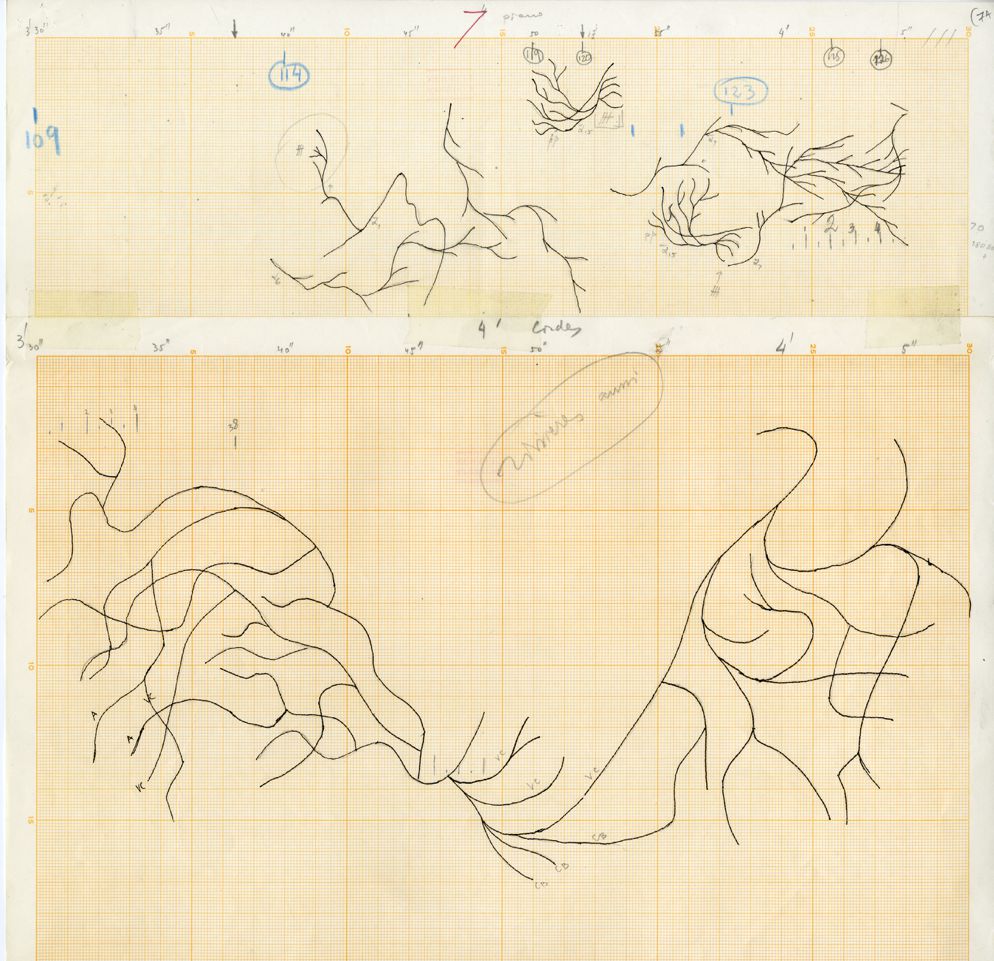James Harley Le concept et la technique de l’arborescence sont nés après que Xenakis eut écrit et publié des textes importants sur sa musique. Il a commencé à y travailler au début des années 1970, à peu près au moment où Formalized Music a été publié sous sa forme anglaise et élargie (Xenakis 1971). Le […]
Dictionnaire
Makis Solomos Dans ses implémentations compositionnelles de modèles théoriques, Xenakis introduit de nombreux « décalages » en « intervenant » constamment. Tous les spécialistes de sa musique, lorsqu’ils comparent les modèles théoriques aux partitions, ont noté de nombreux « écarts » entre les données prescrites par les premiers et les données que l’on trouve dans les secondes. En d’autres termes, les […]
Makis Solomos translation from the French: Jennifer Higgins When Xenakis creates compositional implementations of theoretical models, he frequently “intervenes” and introduces many “discrepancies.” All Xenakis specialists, when comparing the theoretical models with the scores, have noted that there are important “gaps” between the data predicted by the former and the data found in the latter. […]
Agostino Di Scipio – Traduction Pierre Carré Dans le jargon de la musique électronique et informatique, la synthèse granulaire désigne une vaste gamme de techniques de synthèse et de traitement du son partageant un postulat de base commun : en principe, tout son peut être modélisé par la juxtaposition et l’empilement de grandes quantités de […]
Benoît Gibson Xenakis se réfère à la notion de groupe principalement dans deux contextes différents. D’une part, pour établir la structure d’ordre des caractéristiques sonores —Xenakis légitime ainsi la correspondance entre nombres et hauteurs, qui sert de fondement à la théorie des cribles ; et, d’autre part, pour explorer les symétries propres aux structures des […]
Dimitris Exarchos & Peter Hoffmann Metamusic, a term coined by Iannis Xenakis, is the idea of a music of a higher order which would contain any existing music of any tradition as a special case. In other words, Xenakis’s postulated metamusic is universal in the sense that it encompasses all musics of all time and […]
Dimitris Exarchos In the early 1960s Xenakis developed a compositional theory based on the observation that certain musical structures are independent of time. His approach to this matter was, among others, a critique of those traditional conceptions that emphasize the temporal dimension of music. He insisted that all music has an aspect outside of time […]
Pierre Carré Xenakis a regroupé sous le terme polytopes un ensemble de différents spectacles ayant pour point commun de mêler musique, lumière et architecture dans une expérience sensorielle totale : les Polytopes de Montréal, Persepolis, Cluny, Mycènes, et le Diatope. Bien qu’ils partagent le même nom, ces spectacles produced between 1967 à 1978 prennent des formes […]
James Harley In mathematics, a random walk is a process that describes a path that consists of a succession of random steps on some mathematical space (e.g., 2-dimensional space: amplitude-time, or pitch-time). It was first introduced by Karl Pearson in 1905. An elementary example of a random walk is on the integer number line which […]
Elisavet Kiourtsoglou En géométrie, une surface est réglée si une ligne droite (ligne génératrice) passe par chacun de ses points. Le cylindre, le cône, l’hélicoïde, le paraboloïde hyperbolique, le conoïde et de nombreuses autres formes tridimensionnelles répondent à la définition mathématique ci-dessus. Xenakis (1958) a fait référence pour la première fois aux propriétés des surfaces […]


